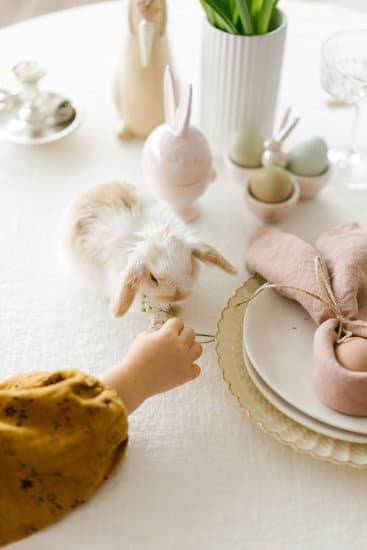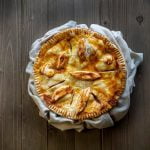Cake decorating chocolate swirls have become a staple in the world of cake design, adding a touch of elegance and creativity to any creation. These delicate and intricate patterns offer endless possibilities for cake decorators, allowing them to showcase their talent and create stunning masterpieces. From simple yet mesmerizing designs to complex and ornate creations, chocolate swirls have captured the hearts of bakers and dessert enthusiasts alike.
The popularity and appeal of cake decorating chocolate swirls can be attributed to their versatility and ability to elevate the overall aesthetic of a cake. Whether used as a focal point or as an embellishment, these swirls have the power to transform a plain cake into a work of art. Their fluidity and organic shapes add a sense of movement and elegance, making them visually appealing to both the eye and taste buds.
When it comes to cake decorating with chocolate swirls, mastering the basics is essential. This includes understanding different techniques for creating these beautiful designs, using quality chocolate, and employing proper tempering techniques. The right combination of skills and tools can result in flawless swirls that are not only visually stunning but also possess an enjoyable texture and taste.
Whether you’re new to cake decorating or are experienced in this art form, learning about various piping techniques is crucial when working with chocolate swirls. Piping bags and tips can be used to achieve different effects and patterns that add dimension and depth to your cakes.
By following step-by-step instructions and looking at visual examples along the way, you’ll soon become adept at creating intricate chocolate swirl designs that will impress anyone who lays eyes on your cakes.
As you embark on your cake decorating journey with chocolate swirls, keep in mind that there’s more than just aesthetics – incorporating colors can bring vibrancy and excitement to your creations. By using food coloring or edible color powders, you can experiment with different color combinations that complement your chocolate swirls beautifully. Achieving the perfect consistency for colorful swirls is also essential to ensure that the colors blend seamlessly and create a cohesive design.
Cake decorating with chocolate swirls goes beyond just creating visually stunning desserts – it’s about enhancing the overall chocolate decorations as well. Incorporating dusts and drizzles can add texture and interest to your designs, while combining different chocolate elements like shavings or curls can elevate the entire presentation of your cake. The key is to maintain a cohesive and harmonious look throughout, ensuring that every component of the design works together to create a delicious masterpiece.
In the world of celebrations, themed cakes hold a special place, and chocolate swirls can play a significant role in bringing these themes to life. Birthdays, weddings, anniversaries, and other special occasions become even more memorable when they’re celebrated with a bespoke chocolate swirl-adorned cake. With endless possibilities for customization, you can tailor these swirls to fit any theme or color scheme with ease, letting your creativity flow freely.
Creating gorgeous chocolate swirl decorations may sometimes come with its fair share of challenges. Issues like chocolate seizing or uneven swirls can arise during the process, prompting frustration for even experienced cake decorators. However, by understanding common challenges and having access to troubleshooting advice and solutions specific to such situations, you’ll be able to overcome these obstacles with confidence.
For those who are looking to take their cake decorating skills with chocolate swirls to an advanced level, there are techniques that can push boundaries and result in truly awe-inspiring creations. Marbling techniques or adding textured effects allow for greater complexity and dimensionality in your designs.
By following step-by-step instructions accompanied by visuals and learning insider tips from professionals in the field, you’ll soon be able to achieve professional-looking chocolate swirls that will leave everyone speechless.
The Basics of Cake Decorating with Chocolate Swirls
Creating beautiful chocolate swirls on cakes is a skill that every cake decorator should have in their repertoire. Whether you are new to cake decorating or looking to expand your skills, mastering the basics of cake decorating with chocolate swirls is essential. In this section, we will explore the different techniques and methods for creating chocolate swirls on cakes, discuss the importance of using quality chocolate and proper tempering techniques, and provide tips and tricks for achieving flawless chocolate swirls.
When it comes to creating chocolate swirls, there are several techniques you can use. One popular method is to melt the chocolate and drizzle it onto the cake using a spoon or fork. This technique allows for free-form designs and adds a touch of elegance to any cake.
Another technique involves creating chocolate ganache and using a piping bag fitted with a small round tip to pipe swirls onto the cake. This method allows for more precise designs and can be used to create intricate patterns.
It is crucial to use high-quality chocolate when decorating cakes with chocolate swirls. The type of chocolate you choose will affect both the taste and appearance of your decorations. Dark chocolates with at least 70% cocoa content are recommended for a rich flavor profile. Additionally, properly tempering the chocolate ensures that it sets correctly and has a glossy finish. Tempering involves melting the chocolate, cooling it slightly, then gently reheating it while stirring until it reaches the desired temperature.
To achieve flawless chocolate swirls, there are a few tips and tricks worth mentioning. Firstly, make sure your workspace is clean and dry before starting. Any moisture can cause the melted chocolate to seize or become grainy. Secondly, practice good technique by applying even pressure when piping or drizzling the chocolate onto the cake.
This will help maintain consistent lines throughout your design. Lastly, don’t be afraid to experiment. Allow your creativity to flow as you explore different swirling patterns and designs.
When working with chocolate swirls, it is important to remember that practice makes perfect. Don’t be discouraged if your first attempts don’t turn out exactly as you envisioned. With time and practice, you will become more comfortable and confident in creating beautiful chocolate swirls on cakes.
| Techniques for Creating Chocolate Swirls | Tips for Achieving Flawless Chocolate Swirls |
|---|---|
| Drizzling melted chocolate onto the cake with a spoon or fork | Ensure workspace is clean and dry before starting |
| Piping ganache swirls onto the cake using a piping bag and small round tip | Apply even pressure when piping or drizzling the chocolate onto the cake |
| Using different swirling patterns and designs to create unique decorations | Practice good technique to maintain consistent lines throughout the design |
Chocolate Swirl Designs
Piping techniques are a popular and versatile way to create beautiful chocolate swirl designs on cakes. With the right tools and techniques, bakers can achieve stunning effects that impress both visually and taste-wise. In this section, we will explore various piping techniques used to create chocolate swirls, showcasing different effects and patterns that can be achieved.
One of the most common methods for creating chocolate swirls is by using piping bags and tips. Piping bags allow for precise control over the flow of chocolate, making it easier to create intricate designs. There are different types of piping tips available, each producing a unique pattern. For example, a star-shaped tip creates defined lines with ridges, while a round tip results in smooth, concentric circles.
To achieve the perfect chocolate swirl, it is important to master the technique of holding and maneuvering the piping bag. The grip should be firm but not too tight to allow for controlled pressure application. The angle at which the bag is held also affects the shape and size of the swirls. Experiment with different angles to find what works best for your desired design.
Creating chocolate swirls using piping techniques involves steady hand movements and consistent pressure on the bag. Start by practicing on a piece of parchment paper or wax paper before moving onto cakes. This will help you develop muscle memory and gain confidence in your piping skills.
When it comes to designing with chocolate swirls, there are no limits to creativity. Swirls can be used to create elegant borders around cake tiers or intricate patterns on top of cupcakes. They can also be combined with other decorations such as flowers or lettering for added visual interest.
Incorporating Colors
Adding colors to chocolate swirls can elevate the overall appearance of your cake designs and create a vibrant and eye-catching focal point. There are various methods to incorporate colors into your chocolate swirls, allowing you to explore different palettes and truly customize your creations.
One popular technique for adding colors to chocolate swirls is by incorporating food coloring. Gel-based or powdered food coloring works best as it won’t affect the consistency of the chocolate. Start by melting your white or dark chocolate in a microwave or using a double boiler, and then divide it into separate bowls for each color you want to incorporate.
Add small amounts of food coloring at a time until you achieve the desired shades. Remember that a little goes a long way with food coloring, so start with a small amount and gradually add more if needed.
Another option is using edible color powders or dusts to add vibrancy to your chocolate swirls. These powders are available in an array of shades and can be brushed or sprinkled onto the melted chocolate before piping the swirls. Use a clean, soft-bristled brush or a small sieve to evenly distribute the powder over the surface of the swirls. Experiment with different combinations of color powders for unique and captivating effects.
When incorporating colors into your chocolate swirls, achieving the perfect consistency is crucial for successful results. If your colored chocolate becomes too thick, warm it slightly using gentle heat until it reaches a smoother consistency for piping. On the other hand, if it becomes too runny, allow it to cool slightly or add more melted chocolate to thicken it up.
Remember to have fun with your creations and let your creativity shine through when adding vibrancy to your chocolate swirls. Playing with different colors opens up endless possibilities and allows you to personalize your cake designs for any occasion or theme. Whether you’re creating pastel-toned swirls for baby showers or vibrant hues for birthdays, incorporating colors into your chocolate swirls will undoubtedly add a wow factor to your cake decorating endeavors.
Beyond the Swirls
Cake decorating with chocolate swirls is not limited to just the swirls themselves. There are various techniques and additions that can be used to enhance and elevate chocolate decorations on cakes. By going beyond the swirls, cake decorators can create stunning and visually appealing designs that will impress any audience.
One technique to consider when enhancing chocolate decorations is using dusts and drizzles. Edible dusts can add a touch of shimmer or metallic sheen to the swirls, giving them an ethereal look. This technique works well for special occasions like weddings or formal events where a touch of elegance is desired. Drizzles, on the other hand, involve thin lines of melted chocolate poured over the swirls. This adds texture and depth to the decoration, creating a more dynamic visual effect.
Incorporating other types of chocolate decorations in combination with chocolate swirls can also take your cake design to the next level. Chocolate shavings or curls can be strategically placed around the swirls to enhance their overall appearance. These additional elements provide varying textures and shapes, adding interest and dimension to the cake design. When combining different chocolate elements, it’s important to ensure that they all work cohesively together and complement each other effectively.
To maintain a cohesive design when incorporating multiple chocolate elements, it’s essential to consider factors such as color scheme, theme, and style. The colors used in the additional chocolate decorations should complement or contrast with the colors of the swirls in order to create a balanced and visually pleasing design. Additionally, it’s important to consider how different textures and shapes can interact with each other on the cake surface.
By exploring these enhancements and techniques for chocolate decorations alongside the use of swirls, cake decorators are able to create visually stunning cakes that are sure to leave a lasting impression. The combination of dusting techniques, drizzles, and additional chocolate elements allows for limitless creativity in cake decorating with chocolate swirls. So go ahead and experiment, push your boundaries, and let your imagination run wild to create truly magical cake designs.
Chocolate Swirls for Special Occasions
Chocolate swirls can add a touch of elegance and sophistication to any cake, making them the perfect choice for special occasions. Whether it’s a birthday, wedding, or other celebration, chocolate swirls can be tailored to fit the theme or color scheme of any event. In this section, we will showcase how chocolate swirls can be used to create themed cakes and provide specific examples and inspiration.
Creating themed cakes with chocolate swirls allows you to showcase your creativity and personal touch. For a child’s birthday party, consider using vibrant colors and fun shapes like balloons or animals. Wedding cakes can be adorned with delicate and elegant white chocolate swirls that match the bride’s dress or the overall wedding decor. If you’re celebrating a holiday or seasonal event, incorporate festive elements like flowers for spring or snowflakes for winter.
To further enhance the theme of your cake, consider incorporating additional chocolate decorations along with the swirls. Chocolate shavings or curls can provide texture and depth to your design while maintaining a cohesive look. For example, on a beach-themed cake, add some edible seashells made from colored white chocolate along with flowing waves created by chocolate swirls.
When creating themed cakes with chocolate swirls, it’s important to consider the overall design and ensure that all elements work together harmoniously. Pay attention to color schemes and patterns to create an aesthetically pleasing cake that will impress your guests.
Whether you are creating an elaborate multi-tiered masterpiece or a simple yet beautifully decorated cake, chocolate swirls are sure to make any special occasion even more memorable. With their versatility and ability to complement various themes, these swirls allow you to truly personalize your creations. So let your imagination run wild, experiment with different techniques and designs, and adorn your next special occasion cake with captivating chocolate swirls that will leave everyone in awe.
Troubleshooting Common Challenges in Chocolate Swirl Decorating
Creating chocolate swirls on cakes can be a fun and visually stunning way to enhance your dessert creations. However, like any cake decorating technique, there can be challenges that arise. In this section, we will address some common issues that readers may encounter when attempting to create chocolate swirls and offer solutions and tips to overcome them.
One common challenge that decorators may face is the issue of chocolate seizing. Seized chocolate occurs when it comes into contact with even a small amount of moisture, causing it to become grainy and clumpy. To prevent this from happening, it is important to ensure that all utensils and surfaces are completely dry before working with chocolate. Additionally, be cautious when adding any liquid ingredients or extracts to the melted chocolate and always do so gradually while stirring constantly.
Another challenge that decorators may encounter is achieving evenly sized swirls. Uneven swirls can occur if the chocolate is not piped consistently or if the piping bag is not held at a steady angle. To create uniform swirls, practice consistent pressure on the piping bag as you pipe the chocolate onto the cake. It can also be helpful to use a template or guide lines on the cake surface to ensure consistency in size and placement.
Climatic conditions can also impact the outcome of your chocolate decorations. If you are working in a hot and humid environment, the melted chocolate may become too runny and difficult to pipe. One solution is to work in an air-conditioned room or try placing your piping bag filled with melted chocolate in the refrigerator for a few minutes to firm up slightly before re-attempting piping.
On the flip side, if you are in a colder environment, you may find that your melted chocolate becomes too thick and difficult to work with. In this case, gently rewarm the chocolate using short bursts in the microwave or over a double boiler until it reaches a more fluid consistency.
By being aware of these common challenges and following the tips provided, you can troubleshoot and overcome any issues that may arise when decorating with chocolate swirls. Don’t be discouraged if your first attempts are not perfect – practicing and experimenting are key to achieving beautiful chocolate swirl designs. Remember, the journey is just as important as the end result, so embrace the learning process and have fun along the way.
Taking It to the Next Level
Marbling: Creating Stunning Visual Effects
For those who want to take their chocolate swirl techniques to the next level, marbling is one advanced technique worth exploring. Marbling involves creating intricate patterns and designs by blending different colors of melted chocolate. This technique can create a visually stunning effect that adds depth and complexity to your cake decorations.
To achieve beautiful marble patterns, begin by melting different colors of chocolate separately. Once melted, allow the chocolates to cool slightly, as this will make them easier to work with. Then, drizzle each color onto a parchment-lined surface in random patterns or shapes. Using a toothpick or skewer, gently swirl the colors together, being careful not to over-mix and lose the distinctness of each color.
Once you have achieved your desired marble pattern, carefully transfer the marbled chocolate onto your cake using a spatula or offset palette knife. You can also cut out smaller pieces of marbled chocolate and strategically place them onto your cake for more precise designs. The result is a visually captivating masterpiece that is sure to impress both guests and recipients alike.
Adding Texture: Elevating Your Chocolate Swirls
Another advanced technique that can elevate your chocolate swirl designs is adding texture. By incorporating texture into your swirls, you create dimension and visual interest that takes your cake decorating skills up another notch. There are several ways to achieve textured effects with chocolate swirls.
One method involves using different piping tips to create various textures in the chocolate. For example, using a star tip will give your swirls a ridged appearance, while a petal tip can create delicate ruffles or waves in the chocolate.
Another way to add texture is by incorporating additional elements into your designs. Consider sprinkling edible pearls or confetti on top of your chocolate swirls for added visual appeal. You can also experiment with different types of edible dusts or glitters to give your swirls a shimmering effect.
The key to incorporating texture is to experiment and let your creativity soar. Try combining different techniques and materials to create unique textures that are entirely your own. With practice, you will master the art of creating textured chocolate swirls that are both visually stunning and delicious.
Masterful Drizzles: Enhancing Chocolate Swirls with Elegance
One final advanced technique for enhancing chocolate swirl decorations is through the art of drizzling. Drizzling involves adding thin lines or streams of melted chocolate onto your cake, creating a sense of movement and elegance. This technique can be used alongside or in combination with chocolate swirls to add an extra touch of sophistication to your designs.
To achieve perfect drizzles, begin by melting the desired amount of chocolate in a piping bag. Make sure the chocolate is at the correct temperature for drizzling; if it is too hot, it may result in messy drips, but if it is too cool, the drizzles may not flow smoothly.
Once you have filled the piping bag with melted chocolate, gently squeeze the bag to release a steady stream onto your cake. You can opt for straight lines or create cascading effects by moving your hand at different angles while drizzling. The key is to find a balance between control and artistic expression.
Incorporate various drizzle patterns into your cake design, such as overlapping lines or crisscross patterns. By combining these elegant drizzles with your existing chocolate swirls, you can create a breathtaking visual masterpiece that will leave everyone impressed.
Remember that advanced techniques like marbling, adding texture, and using elegant drizzles require practice and patience. Don’t be discouraged if your first attempts don’t turn out exactly as planned – keep experimenting, refining your skills, and embracing the artistry of cake decorating chocolate swirls in all its forms.
Conclusion
In conclusion, cake decorating with chocolate swirls is an art form that brings beauty and magic to any cake design. These versatile and creative swirls add a touch of elegance and complexity to simple cakes, making them truly memorable. Throughout this article, we have explored the basics of creating chocolate swirls, delved into various piping techniques, discussed incorporating colors for vibrancy, enhanced chocolate decorations, showcased their use in special occasions, troubleshooted common challenges, and even introduced advanced techniques.
The artistry behind decorating with chocolate swirls is not only in the visual appeal but also in the satisfaction of creating something beautiful with your own hands. By experimenting with different techniques and pushing boundaries, you can discover your own unique style and create stunning designs that will delight anyone who sets eyes on your creations.
We encourage you to embrace the magic of cake decorating with chocolate swirls by trying out these techniques yourself. Don’t be afraid to get creative and have fun with it. As you embark on this journey of chocolate swirl decoration, we invite you to share your masterpieces on social media platforms using our designated hashtag #ChocolateSwirlArt. Connect with fellow cake decorators from around the world and inspire others with your beautiful creations.
So go ahead, grab some quality chocolate, temper it perfectly, and let your imagination run wild as you create intricate and mesmerizing chocolate swirl designs. It’s time to elevate your cake decorating skills and experience the true artistry of cake decoration through the enchanting beauty of chocolate swirls.
Frequently Asked Questions
How do you grate chocolate swirls?
Grating chocolate swirls is a simple yet effective technique that can add texture and visual appeal to your desserts. First, make sure the chocolate is at room temperature or slightly chilled for easier grating. Hold the bar of chocolate firmly in one hand and use a box grater with fine-sized holes on a flat surface such as a cutting board or plate.
Gently rub the chocolate against the grater, moving it back and forth in quick motions. The resulting grated chocolate will have a delicate, ribbon-like texture perfect for topping cakes, pies, or ice cream.
How to make chocolate lines on cake?
Adding chocolate lines to a cake is an elegant way to enhance its appearance and give it a professional touch. Start by choosing high-quality melted chocolate, either milk or dark depending on your preference. Fill a piping bag fitted with a narrow round tip with the melted chocolate.
Lightly press the bag as you pipe thin lines onto parchment paper or directly onto the cooled cake surface using steady hand movements. You can create straight lines, diagonals or even create intricate patterns depending on your desired design. Allow the chocolate to fully set before serving or decorating further.
How do you melt chocolate for piping?
Melting chocolate for piping requires some care and attention to achieve smooth and workable consistency. Begin by selecting good quality baking chocolate bars or chips with high cocoa content for best results. Break the chocolate into small pieces and place them in a heatproof bowl set over simmering water, ensuring that the bottom of the bowl does not touch the water.
Stir frequently until the chocolate melts completely without any lumps remaining. Once melted, remove from heat and let it cool slightly before transferring it into a piping bag fitted with a fine round tip or parchment cone if preferred. It’s crucial to avoid overheating as it may cause seizing or thickening of the melted chocolate – low heat and gentle stirring are key to achieving optimal melting consistency suitable for piping designs onto desserts.

Welcome to our cake decorating blog! My name is Destiny Flores, and I am the proud owner of a cake decorating business named Cake Karma. Our mission is to provide delicious, beautiful cakes for all occasions. We specialize in creating custom cakes that are tailored specifically to each customer’s individual needs and tastes.





